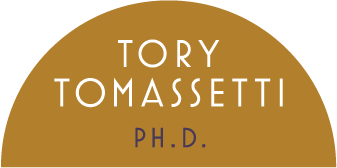Single Session Phobia Treatment
Pho·bi·a (fō′bē·ǝ) n. An exaggerated usually inexplicable and illogical fear of a particular object, class of objects, or situation
Conquering your phobias: one focused session
Phobias can develop at any point in the lifespan, from early childhood through advanced age. Left untreated, phobias persist indefinitely, sometimes resulting in decades of distress and avoidance of everyday stimuli.
Whether your phobia onset can be tied to a recent or specific experience, or seems to have been present for your entire life, cognitive behavioral exposure therapy offers a long term remedy for this problem.




What is Exposure Therapy?
Exposure therapy is the most effective treatment for specific phobias. It is an evidence-based intervention that is more effective than either medication alone or medication and therapy combined (Walker, 2003).
During exposure therapy, clients learn both cognitive and behavioral strategies for overcoming fear and avoidance. Cognitive interventions are used to restructure fears and catastrophic thoughts; behavioral interventions are designed to facilitate clients’ ability to manage distress while gradually approaching the feared stimulus. Over the course of one or more sessions, clients experience an increased ability to confront avoided stimuli as they become desensitized to the (previously) feared stimuli.
Dr. Tomassetti offers intensive exposure protocols for treating certain phobias. The one-session treatment (OST) approach, developed by Öst in the 1980s, is an efficient and effective intervention for a variety of phobias (Li et al., 2020; Öst, Skaret, & ProQuest, 2013). The OST approach for specific phobias is the “boot camp” of exposure therapy. By taking advantage of consecutive hours of progress in a single day, it does not allow for the return of fear between sessions (Öst, 1989; Öst, Skaret, & ProQuest, 2013). In fact, OST has shown to produce a favorable response in 99.2% of patients undergoing this form of phobia treatment (Öst, Skaret, & ProQuest, 2013). In Dr. Tomassetti’s practice, client follow-up data is consistent with the extant literature: those who complete single-session phobia exposure report progress maintenance for years after treatment ends.
Over the past 15 years, Dr. Tomassetti has devoted a portion of her practice to exposure therapies, making her an expert in phobia treatment. She is uniquely qualified to determine the form of exposure that is most likely to effectively address your presenting concerns and guide you through the treatment process.
Following the initial intake, if it is determined that an individual is an appropriate candidate for the single-session phobia treatment, clients are scheduled for one, 4- to 8-hour block with Dr. Tomassetti. This session is conducted in-person and will take place at Dr. Tomassetti’s Union Square office. During the session, it is common for Dr. Tomassetti to accompany clients to other locations (“field trips,” as she refers to them), such as a lab/clinic for bloodwork or injections, pet stores to handle animals, or other real-life scenarios that had been previously avoided.
During the time spent together, the client and psychologist work as a team: creating a hierarchy, selecting objects for exposure, approaching those objects, and changing thoughts and behaviors in relation to those objects. By the end of this extended session, the majority of individuals report that they can tolerate the previously feared object or situation. Most clients go home with a physical token of their success, which is used both as a trophy-of-sorts and a prop that ensures on-going contact with the no-longer-feared stimulus.
Clients are provided with detailed instructions about how to maintain their progress following the marathon of a day!
Though some phobias are better suited to the single-session approach (such as needle/injection, insects/small animals, and dental phobias), other phobias are better suited for multisession phobia treatment therapy (such as fears related to heights, driving, and enclosed spaces). Dr. Tomassetti will discuss the options with each client to determine the best course of action.
Due to the unpleasant nature of confronting phobic stimuli, many clients prefer to “get it over with.” Single session exposure therapy for specific phobias is the “boot camp” of exposure therapy. Following the initial intake appointment, clients typically schedule one, 4-8 hour block with the psychologist. By the end of this extended session, most people report that they are able to tolerate the previously feared object or situation. Clients are instructed in how to maintain their progress after treatment.
Examples of phobias that are well-suited for these extended sessions include:
- Needle/Injection Phobia
- Blood Phobia
- Insect/Animal Phobias
- Dental Phobia
Unsure whether single session phobia treatment is right for you? Contact us and we’ll help you decide!
